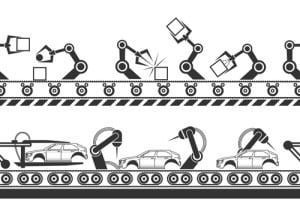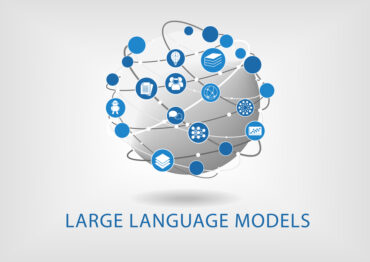
With support from the “big data” ecosystem, the idea of what a “machine” is, as well as how you’ll use them, could transform tomorrow’s manufacturing.
Until recently, industrial controls were connected, point-to-point, with input devices, within self-contained networks. With the advent of the Internet of Things supported by cloud capabilities, the potential for adding massive computing power to the equation.
The resulting Machines-as-a-Service capability is changing the very definition of what is a “machine.”
That’s the gist of a presentation and paper presented at the recent IEEE Edge Computing conference by a team of researchers led by Christoph Pallasch of Aachen University. The team proposed a platform that leverages the recent wave of edge computing technologies to add the edge to manufacturing operations. “Until now, the integration of cloud solutions in industrial control was limited due to missing technologies connecting the Internet of Things with industrial requirements,” they state.
See also: It’s now a global race to digitize manufacturing
Cloud-borne capabilities change all that, enabling “resource-intensive data processing and feedback control loops directly from the shop floor. Industrial software and control algorithms running on the field or edge level can be versioned and exchanged during operating time allowing direct update of control logic or adaptation of production parameters.”
Pallasch and his team say the result of this hyper-connectivity will be a “Machines-as-a-Service” paradigm that “can be realized by attaching IIoT and edge devices with their corresponding field devices to a production network.” The cloud-powered IoT approach would “allow synchronization of different stakeholders along the value chain of production,” they write. “The benefit would be a highly optimized and timely coordinated production chain with reduced downtimes.”
The researchers introduced a demonstration project for their Machine as a Service environment. This was based on cloud-assisted control and edge domain, which, in the demonstration included low-cost commodity hardware linked to robotic arms and connected to the Internet. “Data obtained and saved in a storage is first processed by analytics apps running in the cloud,” the explain.
The concept of Machines-as-a-Service is an essential foundation for the budding Industry 4.0 movement of interconnected and intelligent factories and production systems. “Today’s enterprises look past the speeds and feeds of machine equipment and rather focus on how said equipment drives business revenue,” says Manuel Grenacher, CEO of Coresystems in a recent Forbes Technology Council post.
“Companies no longer purchase manufacturing equipment in a one-and-done payment for the nuts and bolts. Instead, they negotiate the key performance indicators of the equipment in advance and then partially finance the payment based on the machine’s output. In essence, they do not just purchase the machine, but they also purchase a subscription to ensure that the machine continues to drive and enhance the business, hence Machine-as-a-Service,” he says.
Delivering for manufacturing in three areas
Machines-as-a-Service will deliver value in three key areas, Grenacher, illustrates:
Machine lifetime service: “Service is no longer limited to equipment maintenance and repair,” he states. “Service also entails software updates with enhanced features that enable your connected machine to support larger business goals, such as sales efforts.”
Customer touchpoints. Accelerating the pace of customer service to real-time is a key requirement for delivering superior customer experience in the digital age. “Historically, customer touch points have revolved around the product themselves, starting from the purchase of the product, continue through setup with account setup and other related processes, and then trickle off with the occasional service request under the warranty,” Grenacher says. “With the onset of the IoT, the trickle of the third stage is extended through continued software updates until the true end-of-life of the product. In order to make the most of that extension, businesses can incorporate upsell and expansion opportunities within the regular software updates, which in turn results in a more scalable product with a longer shelf life that continues to drive revenue.”
Internal efficiency: “The Machine-as-a-Service is still a machine, and yet at the same time it is so much more,” Grenacher also recently added in a related article in Manufacturing Business Technology. “Through IIoT connectivity, expanded touchpoints and real-time operations, Machines-as-a-Service fulfill the needs of various business departments in real-time. A legal department can check diagnostics and review service logs to ensure their machines are compliant with the latest industry standards.
A finance department can pull production data through the IIoT to conduct cost-benefit analyses. Machines-as-a-service not only run the factory floor but also meet the needs of the entire business, taking full advantage of the connectivity that comes with the IIoT.”




























